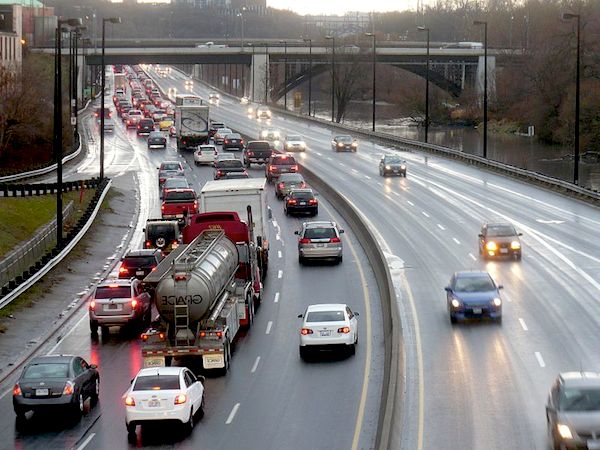NBN Co can't guarantee Libs' 50Mbps speed promise: report

NBN Co would be unable to offer a guaranteed 50Mbps broadband service under the Coalition's alternative model for the national broadband network, NBN Co has warned in confidential briefing papers prepared for incoming communications minister Malcolm Turnbull.
The limitation is due to the unknown performance characteristics of the VDSL2 technology upon which the Coalition's broadband policy is based. VDSL2's real-world performance is based on the still-unknown condition of Telstra's copper network and the distance of any particular subscriber from the closest network node.

These performance characteristics, the report warns, mean customers using the Coalition's NBN model could only realistically be offered two guaranteed speeds: 12Mbps (with 1Mbps uploads) and 25Mbps (with 5Mbps uploads).
“NBN Co would likely deliver a reduced number of speed tiers,” the report says. “In keeping with the current product construct, there would likely be two speed tiers on FTTN.”
A third, higher-speed service could also be offered, but it would not be able to be sold as a guaranteed 50Mbps service but rather would be a "best effort" service in which day-to-day speeds would vary widely depending on each customer's individual situation.
The new government's plan will involve the installation of fibre to neighbourhood 'nodes' – approximately 60,000 of which will be installed around Australia's suburbs under the new government's plan.
Actual speed between the node and customer premises will depend on the condition of the Telstra copper network that has been described as “dilapidated” by industry figures but is being talked up by Telstra and, surprisingly to some, by NBN Co chair Ziggy Switkowski, who will lead NBN Co's renegotiations with the government over access to the network.
Download speeds under the Coalition's FttN network could range up to 100Mbps in a “very limited number of premises”, the report advises, "with a larger percentage of premises being more likely able to achieve 50/10Mbps speeds subject to being close enough (300-400 metres) to the node."
Experts have said the optimal maximum distance to the node is 500 metres, which under NBN Co's modelling would leave many customers outside of the 50Mbps service radius.
Even reaching the 50Mbps threshold would be difficult in practice given the many physical limitations of Telstra's copper network, the report warns: “In order to rollout a VDSL2 network with minimum target speeds of 50 Mbps, significant network remediation will need to occur in the copper plant including the removal of bridge taps, poor joints and any other physical impairment that impacts performance.”
The extent, nature, cost and timeframe for this remediation is still unknown and has been identified one of twelve major obstacles that could prevent the Coalition government from hitting its rollout targets.
Customers using the Coalition's NBN model could only realistically be offered two guaranteed speeds: 12Mbps (with 1Mbps uploads) and 25Mbps (with 5Mbps uploads).
One resident of inner-west Sydney apartment block Sydney Park Village (SPV) recently demonstrated to Turnbull his FttN service's peak download speeds of 49Mbps over FttN, with the nearest node around 100m away.
He had previously subscribed to a 100Mbps service and, by some reports, had clocked SpeedTest.net results on the order of 92Mbps download/39Mbps upload – but subsequently downgraded his plan to 50Mbps.
Another SPV resident said he was getting 27Mbps/16Mbps SpeedTest results over the same infrastructure, highlighting the variable nature of actual delivered speeds.
The inability to guarantee 50Mbps services would impact on NBN Co's relationships with the retail service providers (RSPs) that will buy its wholesale products and sell them to retail NBN customers, the report also warned.
The lack of a guaranteed 50Mbps tier, it said, meant “it is likely that [guaranteed service levels] will need to be reduced from the current standards negotiated with the industry via the Wholesale Broadband Agreement, due to the relative age of copper compared to a newly-installed fibre access network.”
“Anything other than 'best effort' commitments could only be determined following field trials and careful measurements of the performance achieved. However... NBN Co is not able to confirm what higher speed tiers, if any, could be offered under an FTTN architecture until an extensive trial is completed.”
NBN Co CTO Gary McLaren recently confirmed that laboratory trials of VDSL2 technology had been a success, although he could not predict the speeds that would ultimately be available to end users.
The Coalition's broadband policy has promised to deliver 25Mbps to all Australian premises by 2016 and 50Mbps to 90 percent of premises by 2019.
The report, obtained by Fairfax Media and ZDNet Australia, was prepared by NBN Co during the caretaker period at the request of the then Department of Broadband, Communications, and the Digital Economy (DBCDE) for the 'blue book' handover briefing given to the incoming minister. Its release has been blocked by Turnbull and the now Department of Communications despite numerous Freedom of Information requests for its release.
* Updated to include additional information about end-user speeds obtained by SPV residents.